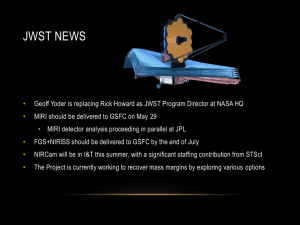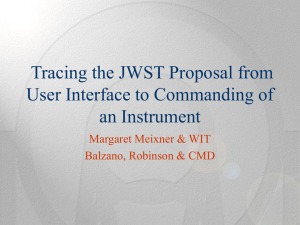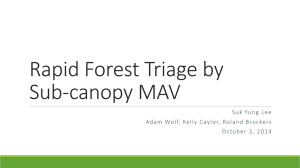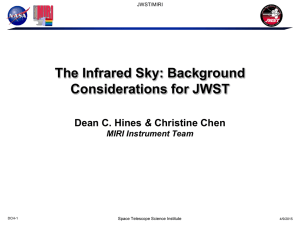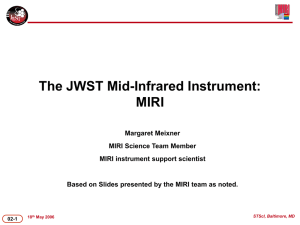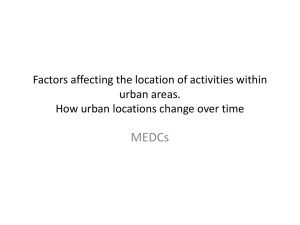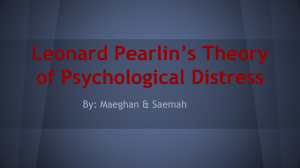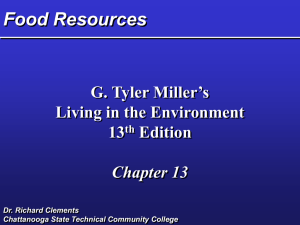Simulating MIRI data with the Multi
advertisement
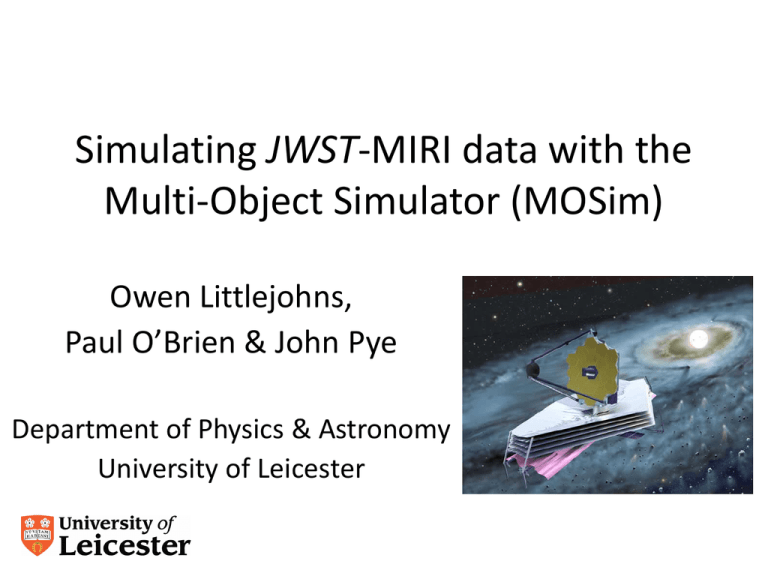
Simulating JWST-MIRI data with the Multi-Object Simulator (MOSim) Owen Littlejohns, Paul O’Brien & John Pye Department of Physics & Astronomy University of Leicester MIRI: • Mid-Infrared Instrument (5-29 μm) • Capable of imaging and spectroscopy (low and medium resolution) • 0.11 arcseconds.pixel-1 • 84” x 113” imaging field of view Fig. 1: CAD model of MIRI produced at the University of Leicester, using Siemen’s ‘IDEAS/NX’software MIRI detector plane: Fig. 2: MIRI detector plane showing location of the imager, MRS, LRS and coronographs (taken from the MIRI pocket guide) MOSim rationale: • Initially designed to support the high redshift working group within the MIRI science team • Consider observing strategies • Assess source detection software • Verify detection limits • Provides full detector plane image to detector simulator (SCASim) MOSim particulars: • • • • Software written in IDL Uses the IDL astronomy library Simulates the imaging capabilities of MIRI Package contains ancillary data, such as background models and PSF images • Also includes minor functions MOSim: • Can cope with a variety of input flux units (e.g. Janskys or AB magnitudes) • Input consists of a ‘Sky’ FITS image • Accounts for reflections off both JWST and MIRI optics • Implements MIRI PSF and JWST effective area • Includes a background model (zodiacal light and JWST thermal emission) MIRI background model: Fig. 3: Background model, including individual components (courtesy of A. Glasse) Outputs: • Designed to produce SCASim compatible outputs (detector plane illumination image) • Also has a simplified version of detector characteristics, which includes Poisson noise, quantum efficiency and dark current • Dead time on detector due to cosmic rays is also simulated • All outputs are in FITS format Abell 1689: Fig. 4: Top left: 5.6 μm simulation, top right: 10 μm simulation, bottom left: 25.5 μm simulation, bottom right: original HST ACS image (courtesy of Jens Horth) Example 1: Sources from Spitzer fluctuations: • Used logN-logS distributions from Spitzer fluctuation analysis (Savage and Oliver, 2005) dN N 0 S , ( S Scut ), dS 0, ( S Scut ). • Can do point or extended sources Fig. 5: Top: point sources from Spitzer logN-logS, bottom: extended equivalent Source recovery from logN-logS: • Sources detected with SExtractor • Simulation agrees with 10σ, 10 ks sensitivity limit modelled by A. Glasse • All sources above this limit appear to be detected • Can see the improvement of detection limit with increased exposure time Fig. 6: Sources detected from logN-logS simulations (blue line is the 10σ sensitivity limit from A. Glasse model) Example 2: A deep field simulation: • Taken source catalogue from LAM (courtesy of Le Fevre and Ilbert) • Simulated entire catalogue in a 10 MIRI FoV image (6.54 x 10-3 sq. deg.) • 30 ks exposure per pointing • Know the input sources, so can assess efficiency of source detection Example images: Fig. 7: 1 MIRI FoV taken from LAM catalogue simulation. 30 ks exposure per pointing (includes simplified detector noise), point sources only Fig. 8: Zoom in view of region containing AB ~ 27 object. Detected by SExtractor at SNR ~ 10. (Left is raw image, right is smoothed image) Source recovery: • Used SExtractor on output image • Can assess the issue of depth versus area • Improvement from increased exposure time shown Fig. 9: Detected sources from LAM catalogue simulations. Red and blue lines denote 30 ks and 50 ks exposures respectively Further work: • Verify recent alterations to the background model • Include the focal plane mask • Thorough documentation • Run through from input image, to MoSim, to SCASim to DHAS • Optimise source detection software Conclusions: • MOSim produces full field, multi-object imager simulations • Powerful tool in assessing observing strategies for deep fields or large surveys • Modelled sensitivity limits appear accurate when tested over a large sample of sources
